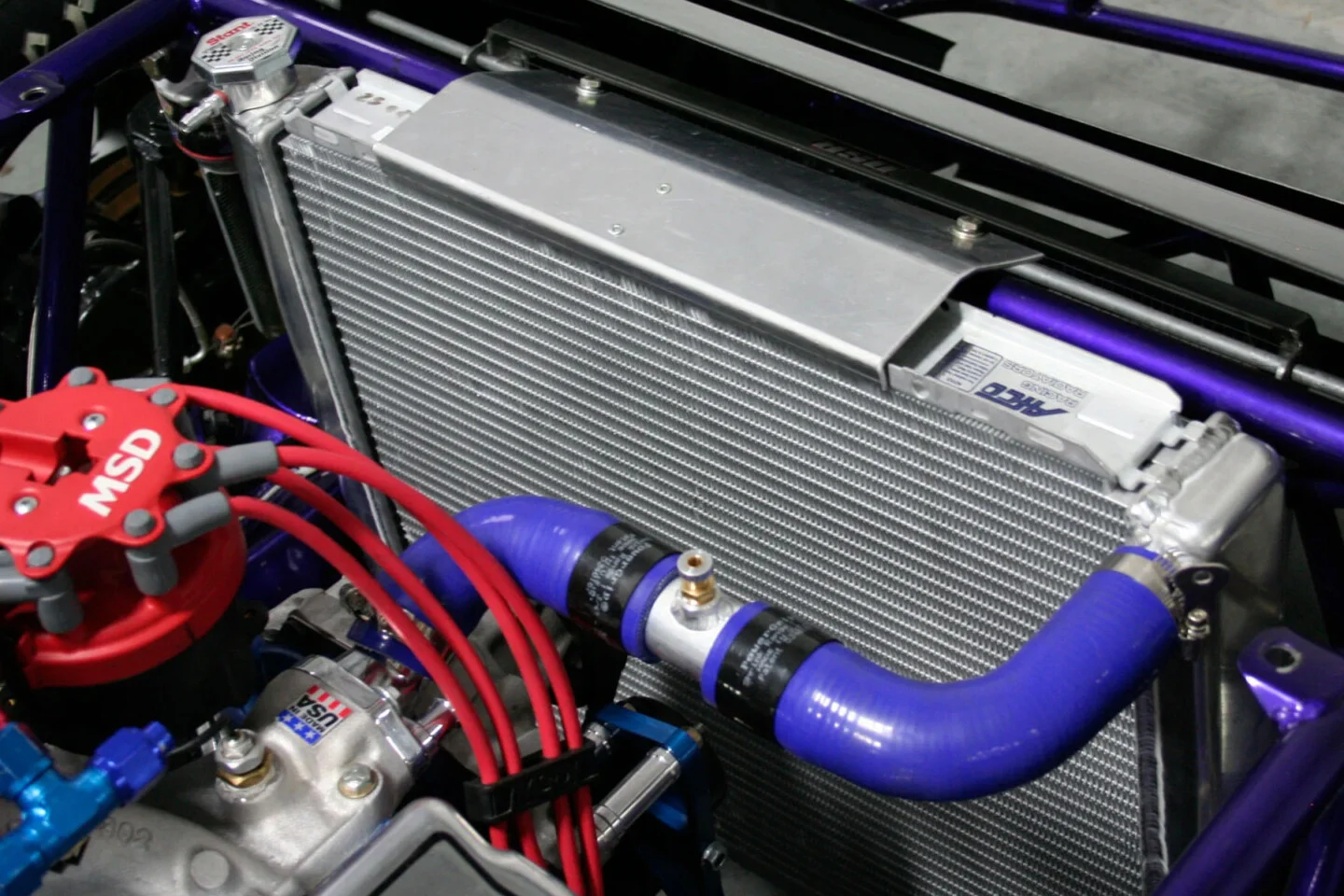Racers hate when the competition season kicks off, and the weather cycle immediately jumps from winter to summer. Sometimes it’s nice to get that easy springtime temperature transition that helps you perfect your performance or your race car’s cooling system. Other times though, your newly created engine power has your engine temps giving you fits.
You can get a wealth of cooling system hardware from AFCO. Still, like with many custom chassis or highly modified factory cars, your cramped spaces in front of your engine may have you settling for a radiator size or routing provisions that could be more optimal.
Workmanship
When visiting the AFCO Racing Products website, you can view a multitude of radiator shapes and sizes, from the popular “Scirocco” size drag radiators to larger and direct bolt-up units for popular car/truck mounting patterns.
The top workmanship features that AFCO offers with their radiator lines are fully Tig-welded assemblies with no epoxy work. The aluminum material thickness is considerably heavier duty compared to some discount radiators. On the inside, aluminum high-capacity tubing marries to the heavy-duty radiator tanks for proper heat transfer characteristics.
These Mustang radiators (left) from AFCO illustrate crossflow radiators with the tanks on either side of the core and the radiator tubes running horizontally. These Mopar-style radiators on the right are downflow radiators that have the tanks on top and bottom of the core with the radiator tubes running vertically.
Flow Designs – Single-Pass
You can get many options with AFCO. One of the overall design points is how your coolant flows through your radiator. Since most performance engines pump your coolant into the top of the radiator, the coolant then travels downward through the core.
In a single-pass radiator cross-flow design, the coolant flow goes from top to bottom and across corners through the heat exchanger, or “core” area, to transfer engine heat from the coolant into the ambient air.
These editable (arrows) order forms on the AFCO website allow you to highly modify a selected radiator to better fit your race car and operate with making sacrifices from mass-produced radiators.
Double-Pass Radiators
Another flow design is called a double-pass radiator. This design provides more cooling over a single-pass radiator, with less than two ounces of added radiator weight. Common temperature drops are 10-20 degrees when replacing a standard configuration radiator of equal core size.
Double-pass radiators gain their efficiency by first passing the fluid over the top half of the radiator and then the bottom half, allowing the radiator to dissipate heat twice. AFCO uses an exclusive 360-degree Tig-welded baffle that splits the radiator core into two sections. This baffle effectively creates two radiators out of one and assures that you won’t have any coolant that has entered the radiator but never made it across the core.
One of the most obvious identifiers of a double-pass radiator is that the upper and lower entry/exit points are on the same side. Obviously, in a performance/racing application, an adjustable thermostat housing can change the direction of the upper hose connection.
These similar-appearing Mustang radiators offer two very different flow designs. The single-pass unit (left) illustrates how the coolant flows top to bottom, side to side. The double-pass radiator (right) uses a baffle midway through the radiator, routing the coolant across the width of the radiator twice.
Triple-Pass Radiators
In more limited applications, an AFCO triple-pass radiator performs exactly how you would think, flowing the coolant within three passages inside the radiator assembly. Most of these units require custom ordering.
Customizing Your Radiator
One of the key decisions when shopping for cooling system products on the AFCO website is selecting from the various customized options that can be specified with their wealth of radiator custom order forms.

These forms contain editable PDF computer documents where you can alter and save differing dimensions, inlet and outlet angles, and hose types and sizes. You can also specify filler neck options and overall core and tank sizes.
Fits All, Fits Nothing Well
My father once told me, “Something that fits everything typically fits nothing well.” With custom chassis and modified bodies, you might need to consider the options available to “think out” and specify a custom radiator to achieve the most cooling efficiency.
When you make big power, the laws of combustion dictate that you make more heat. Making it to the next stoplight or back to the pits without having your temperature gauge scare you may require a maximized radiator with the topmost cooling efficiency possible.